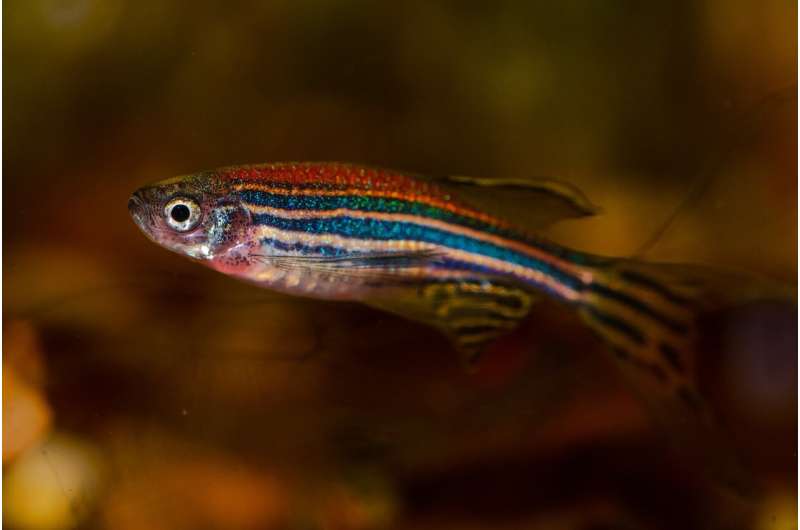July 10, 2023 report
This article has been reviewed according to Science X's editorial process and policies. Editors have highlighted the following attributes while ensuring the content's credibility:
fact-checked
peer-reviewed publication
trusted source
proofread
Biologists identify mechanical waves involved in limb regeneration in zebrafish

A team of molecular and cellular biologists from several institutions in Taiwan and one in the Philippines has identified some of the mechanical waves involved in the regeneration of amputated tailfins in zebrafish. In their study, reported in the journal Nature Physics, the group studied zebrafish regrowth after their tailfins were removed.
Prior research has shown that many animals have the ability to regrow body parts (mostly appendages) when they are lost, typically after incidents of fighting or hunting. Prior research has also shown that for most such creatures, the amount of regrowth is proportional to the amount lost. The generation of mechanical waves are known to play a role in controlling epithelial cell expansion, the means by which new tissues are generated.
In this new effort, the researchers examined the role of wound healing in regeneration—most specifically, if it is involved in positioning of the regrown tissue. To find out, the researchers closely studied the process by which new tailfins grow on zebrafish after amputation.
The study involved performing live-cell imaging on tailfins during the regeneration process as a means of monitoring the generation of new tissue by the emergence of epithelial cells. Such work occurred over the course of three weeks—the time it takes for a zebrafish to grow a new tailfin.
They found that a cell density wave propagated away from the edges of the amputated tissue during the regeneration process. They also found that the maximum amount of propagation distance was proportional to the degree of amputation and proliferation of cells during later stages of regeneration.
Following their observations, the team developed mechanical models to mimic and explain the wave behavior they observed. They note that their models included amputation- and tension-dependent traveling distances related to the regeneration of the tailfin. They conclude that an in vivo position-sensing mechanism is involved in the regeneration process—one that is based on a traveling density wave.
More information: Marco P. De Leon et al, Mechanical waves identify the amputation position during wound healing in the amputated zebrafish tailfin, Nature Physics (2023). DOI: 10.1038/s41567-023-02103-6
Journal information: Nature Physics
© 2023 Science X Network




















